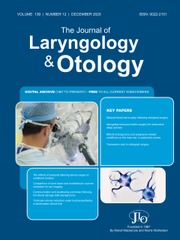No CrossRef data available.
Article contents
Validation of a novel jugular bulb classification in otology and lateral skull base surgery: a neuro-otologist’s perspective
Published online by Cambridge University Press: 18 July 2025
Abstract
The study aim is to validate the utility and implications of the Manjila jugular bulb classification.
A retrospective study of 182 patients who underwent lateral skull base or otologic surgery was conducted. Pre-operative temporal bone computed tomography and magnetic resonance imagery scans were reviewed, and the classification was independently applied by a neuroradiologist and neuro-otologist. Concordance among imaging, intra-operative findings, complications, and functional outcomes was assessed.
Substantial agreement was found between imaging and intra-operative findings (Cohen’s kappa = 0.78). High-riding jugular bulbs were present in 13.7 per cent of cases, with complications such as venous bleeding (5.5 per cent) and cranial nerve palsy (2.7 per cent). Surgical approaches were altered in 25 per cent of cases. Functional outcomes, including hearing and facial nerve preservation, were not correlated with jugular bulb grades.
The classification demonstrated strong concordance with intra-operative findings, emphasising the importance of pre-operative identification for tailored surgical planning.
Information
- Type
- Main Article
- Information
- Copyright
- © The Author(s), 2025. Published by Cambridge University Press on behalf of J.L.O. (1984) LIMITED.
Footnotes
Ravi Sankar Manogaran takes responsibility for the integrity of the content of the paper

